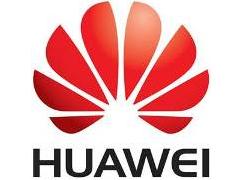Huawei completes core network test for second-phase 5G R&D trial under IMT-2020 (5G) Promotion Group

Huawei is spearheading the completion of the core network test for China’s second-phase 5G R&D trial organised by the IMT-2020 (5G) Promotion Group. The test, conducted at the Beijing lab of China Academy of Information and Communications Technology (CAICT), covered service-oriented architecture, critical 5G service procedures, network slicing, mobile edge computing, and other key technologies.
The second-phase verification for the 5G R&D trial started this year, which is a direct continuation of the first-phase test completed in September 2016. In the second phase, the 5G network test is performed by the network technology workgroup of the CAICT. The IMT-2020 (5G) Promotion Group hopes to steadily and substantially promote 5G product R&D through the phase-wise tests.
In June 2017, 3GPP officially declared that 5G networks will be built on a service based architecture. The control plane network functions of the core network are defined by loosely coupled services that can be combined in countless combinations. The services can be invoked flexibly using universal service-oriented interfaces. In this second-phase core network tests, basic services including registration, service requests, mobility management, and session management have been tested against the latest 5G SA standards.
Future services must be able to adapt to swift changes. They have extremely diverse requirements. 5G network slicing is a perfect match for future services. It allows for a wide variety of differentiated services to enable a wide range of industries. Network slicing is a key 5G technology, one capable of orchestrating on-demand network functions. Network slicing helps bring new business models into reality, and allows carriers to customise networks to the specific needs of vertical industries, helping carriers gain entry to vertical markets.
Mobile edge computing will play a significant role in the 5G era, where unmanned driving, industrial control, and other applications will require ultra-low latency. Such applications would be impossible to execute without the support of mobile edge computing. Local breakout offered by mobile edge computing helps carriers with service innovation, such as enabling services for new scenarios (including smart parks, stadiums, and offices). Third-party application platforms can achieve a Cloud-Pipe synergy. In this way, users can receive optimal service experience jointly delivered by applications and the network.
Felix Qiu, VP of Packet Core Network, Huawei Cloud Core Network Product Line, said, “The 5G network is more agile, efficient, and open than any preceding network. The richer service applications enable 5G to offer diverse services that can adapt quickly to changes. Huawei has always been dedicated to technological innovation. The latest 5G research at Huawei has been thoroughly validated in the test, laying a solid foundation for future 5G development.”
In the future, Huawei will continue to invest in 5G R&D by following existing 5G standards and promoting the formulation of additional 5G standards. Huawei also wishes to strengthen its cooperation with industry partners to get ready for the upcoming 5G era.
Comment on this article below or via Twitter @IoTGN